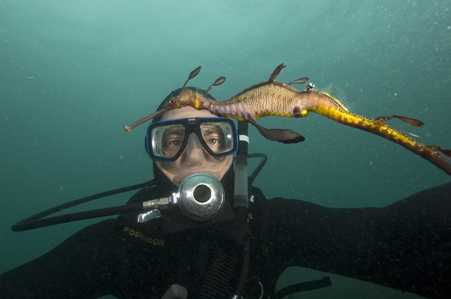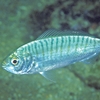Other Names
- Weedy Seadragon
General Description
Spectacular and remarkably camouflaged seahorse relatives with bodies encased in bony rings and decorated with elaborate weed-like appendages. Body relatively deep, compressed; snout long, tubular; tail section long. Colour pattern striking and variable. Overall reddish-orange to brownish or greenish on back, paler and often yellowish below, with bluish to purplish bars on neck and chest and a range of iridescent blue, purple, yellow and black spots, bars and markings. Weedy appendages, reddish, bluish, purplish. To 46 cm.
Biology
These seadragons are often seen around piers, pylons and jetties in association with seagrasses and macroalgae, and are occasionally washed ashore after storms. They are carnivores, feeding on tiny crustaceans, such as mysid shrimps. Male seadragons brood and nourish the developing eggs on an exposed area on the underside of the tail. This protected species is the Marine State Faunal Emblem of Victoria. Although the related Leafy Seadragon, Phycodurus eques, has been reported to occur in Victoria, such records have not been verified.
Habitat
Sheltered reef, macroalgal and seagrass habitats in shallow bays, estuaries and deeper offshore reefs, in depths of 1-50 m.
Reefs
Seagrass meadows
Distribution guide
Southern Australia.
Species Group
Fishes › Seahorses, pipefish and allies
Depth
Shallow (1-30 m)
Deep ( > 30 m)
Water Column
Max Size
46 cm
Diet
Omnivore
Commercial Species
No
Global Dispersal
Native to Australia
Identify
Conservation Status
- DSE Advisory List : Not listed
- EPBC Act 1999 : Not listed
- IUCN Red List : Near Threatened
- Fisheries Act 1995 : Protected Aquatic Biota










